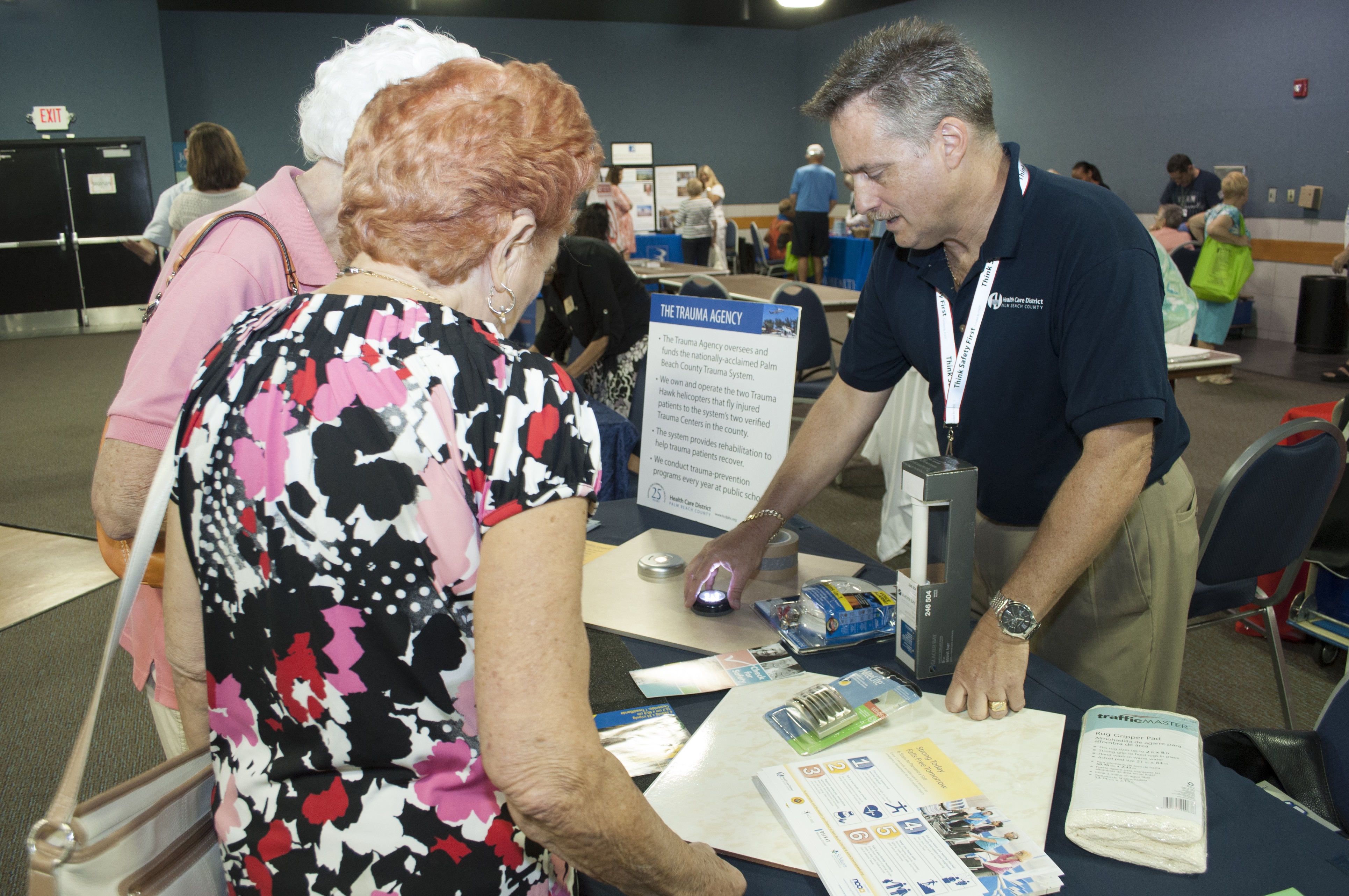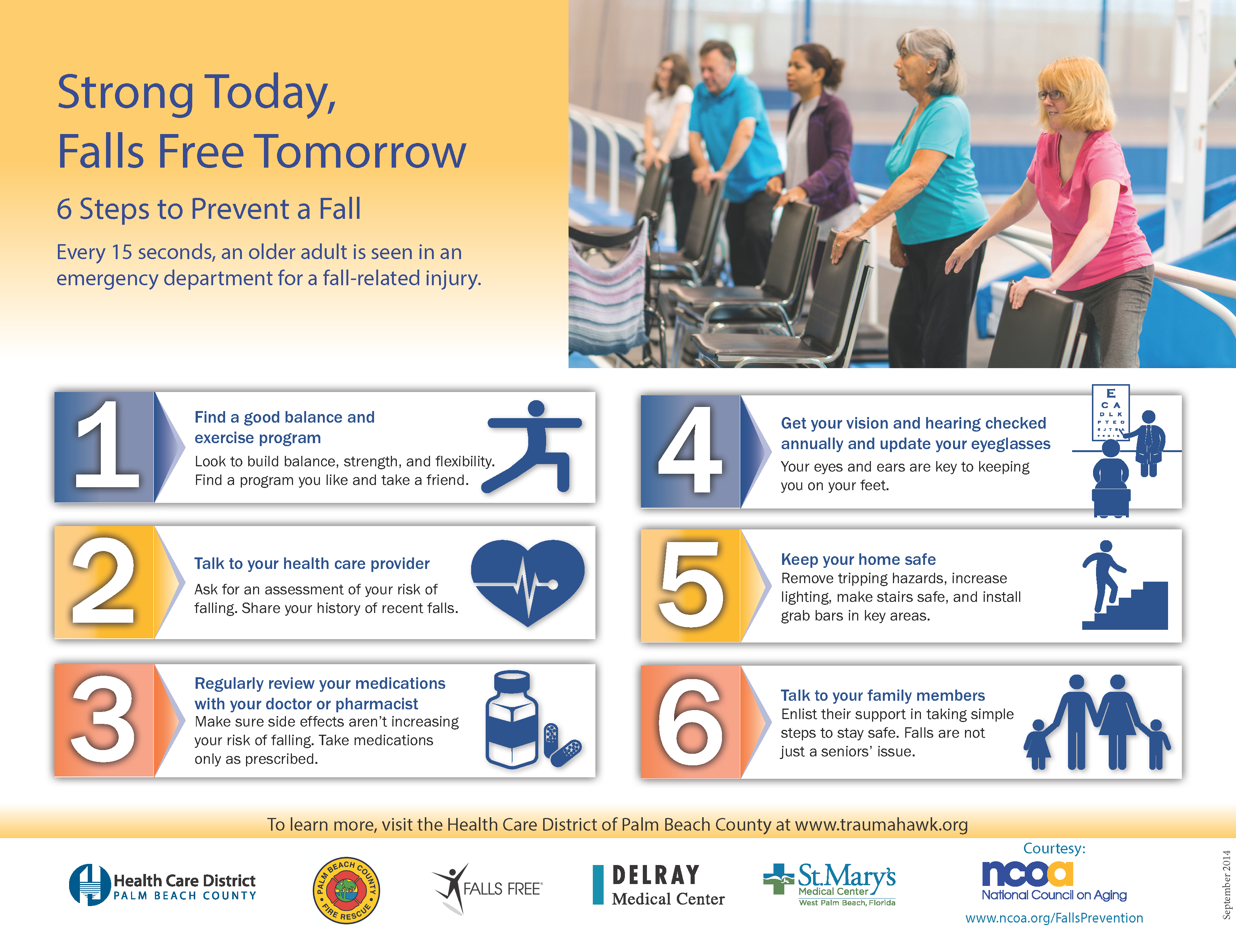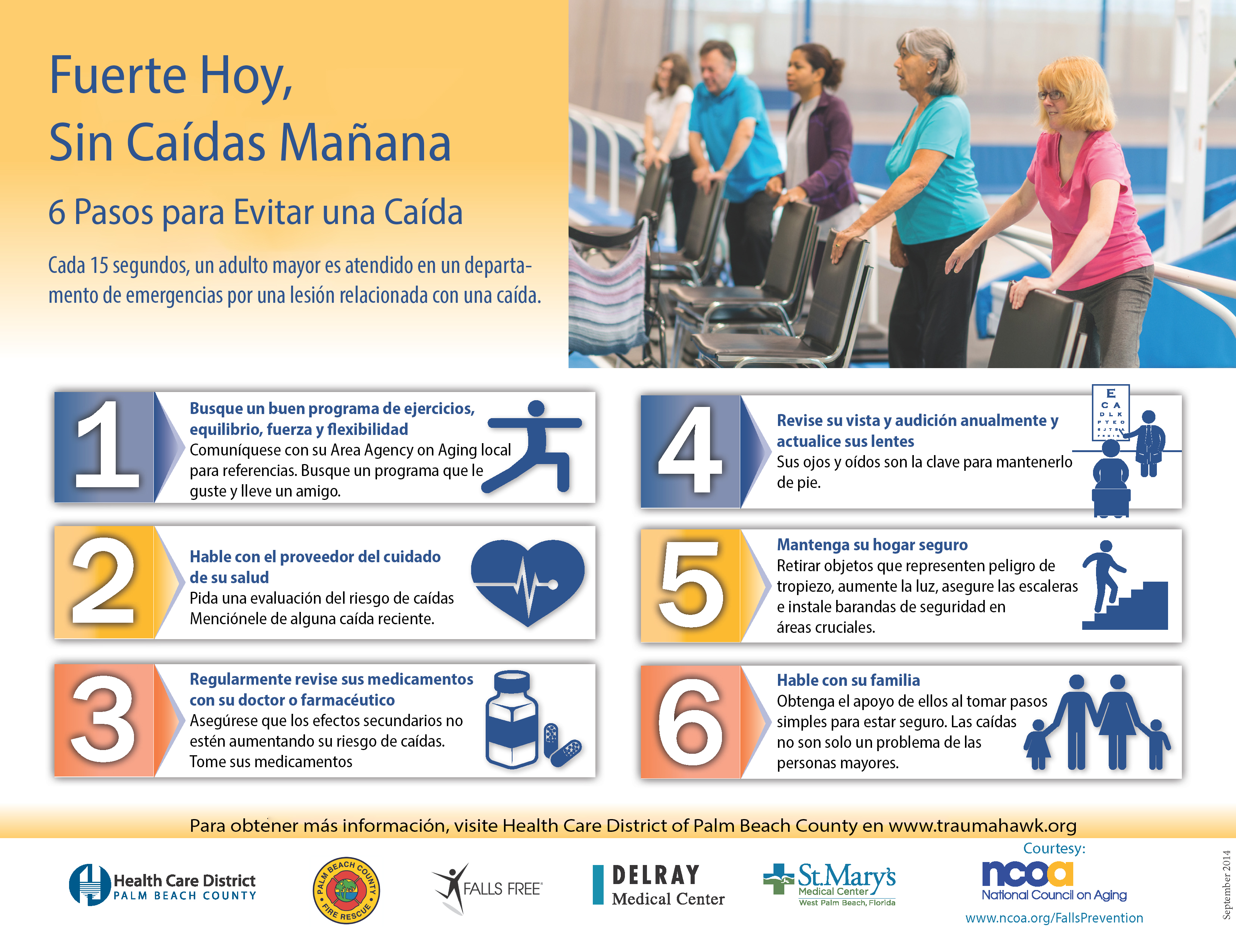Health Care District of Palm Beach County Takes a Stand to Prevent Falls
Taking a tumble is a risk for those who climb ladders or trees. For older adults, staying on their feet can also present a challenge. While falls are not a normal part of aging, every second of every day in the United States an adult 65 years or older suffers a fall. According to the Centers for Disease Control and Prevention (CDC), one out of four older adults will fall each year in the U.S.[1]

“As we age, gravity is not our friend,” said David A. Summers, RN, CFRN, EMT-P, Trauma Nurse Outreach Coordinator with the Health Care District of Palm Beach County who conducts educational outreach events that instruct senior adults how to keep on their feet and avoid the risk of a fall. “In Florida, over 3,700 people died last year as the result of a fall, most of them someone’s grandparent.”
This year, Florida Governor Ron DeSantis recognizes the week of September 20th as Falls Prevention Awareness Week. In Palm Beach County, Florida, patients who fall account for 44% of all traumatic injuries treated within the county’s Trauma System. Summers said over the past 12 months, 134 of those falls were fatal and of those, 116 were patients 65 years or older. According to the CDC, each year at least 300,000 older people are hospitalized for hip fractures.[2] Falling once doubles your chances of falling again.[3]
“Many factors can lead to a fall, such as loss of vision, being off-balance and not lifting your feet,” Summers said. “The use of blood thinners can worsen the outcome of a fall. Many people who fall, even if they are not injured, become afraid of falling. That leads to less activity, becoming weaker and ultimately, more prone to falling again and having a more serious outcome.”
Summers said senior adults most often fall while getting in and out of bed, when getting on or off the toilet, or walking at night when the lights are off. While falling can be painful and costly, the good news is that falls are preventable. Summers recommends family members get involved as well. Together, they should ensure there is adequate lighting and eliminate any trip hazards in the home, like area rugs or power cords. Seniors should have their hearing and vision checked annually and update their eyeglasses.
“Encourage the use of assistive devices, like walkers, and install grab bars, especially in bathrooms and showers,” Summers said. “It’s also important to wear proper footwear like flat, rubber-soled shoes. In addition, review medications and make sure physician orders are properly followed.”
Family members should also talk to their loved one’s provider about checking for Vitamin D deficiency and advise the physician of any recent falls since seniors often withhold that information from their doctor. One of the best tips to prevent falling is to remain physically active. Flexibility, strength-training and building balance are key. Seniors can benefit from taking yoga, tai chi and other exercise classes with friends and family.
“Motivating your loved ones to keep moving at a slow and steady pace is important as they age,” said Summers. “Being observant and engaged can ensure they remain active and stay safe.”
To learn more about preventing falls, visit the CDC’s website, the National Council on Aging’s website and the Health Care District of Palm Beach County’s Falls Awareness page where you can print the flyer “Six Steps to Prevent a Fall.


__________________________
[1] Bergen G, Stevens MR, Burns ER. Falls and Fall Injuries Among Adults Aged ≥65 Years — United States, 2014. MMWR Morb Mortal Wkly Rep 2016;65:993–998. DOI: http://dx.doi.org/10.15585/mmwr.mm6537a2
[2] Healthcare Cost and Utilization Project (HCUP). 2012. Agency for Healthcare Research and Quality, Rockville, MD. http://hcupnet.ahrq.govExternal. Accessed 5 August 2016.
[3] O’Loughlin J et al. Incidence of and risk factors for falls and injurious falls among the community-dwelling elderly. American journal of epidemiology, 1993, 137:342-54.
-end-
About the Health Care District
The Health Care District of Palm Beach County provides primary medical care and dental services for adults and children at the C. L. Brumback Primary Care Clinics, a coordinated and lifesaving Trauma System that includes two FAA-certified Trauma Hawk air ambulances, registered nurses in nearly 170 public schools, short and long-term skilled nursing at the Edward J. Healey Rehabilitation and Nursing Center in Riviera Beach, and acute care at its teaching hospital, Lakeside Medical Center, which is accredited by The Joint Commission and serves the rural Glades’ communities.